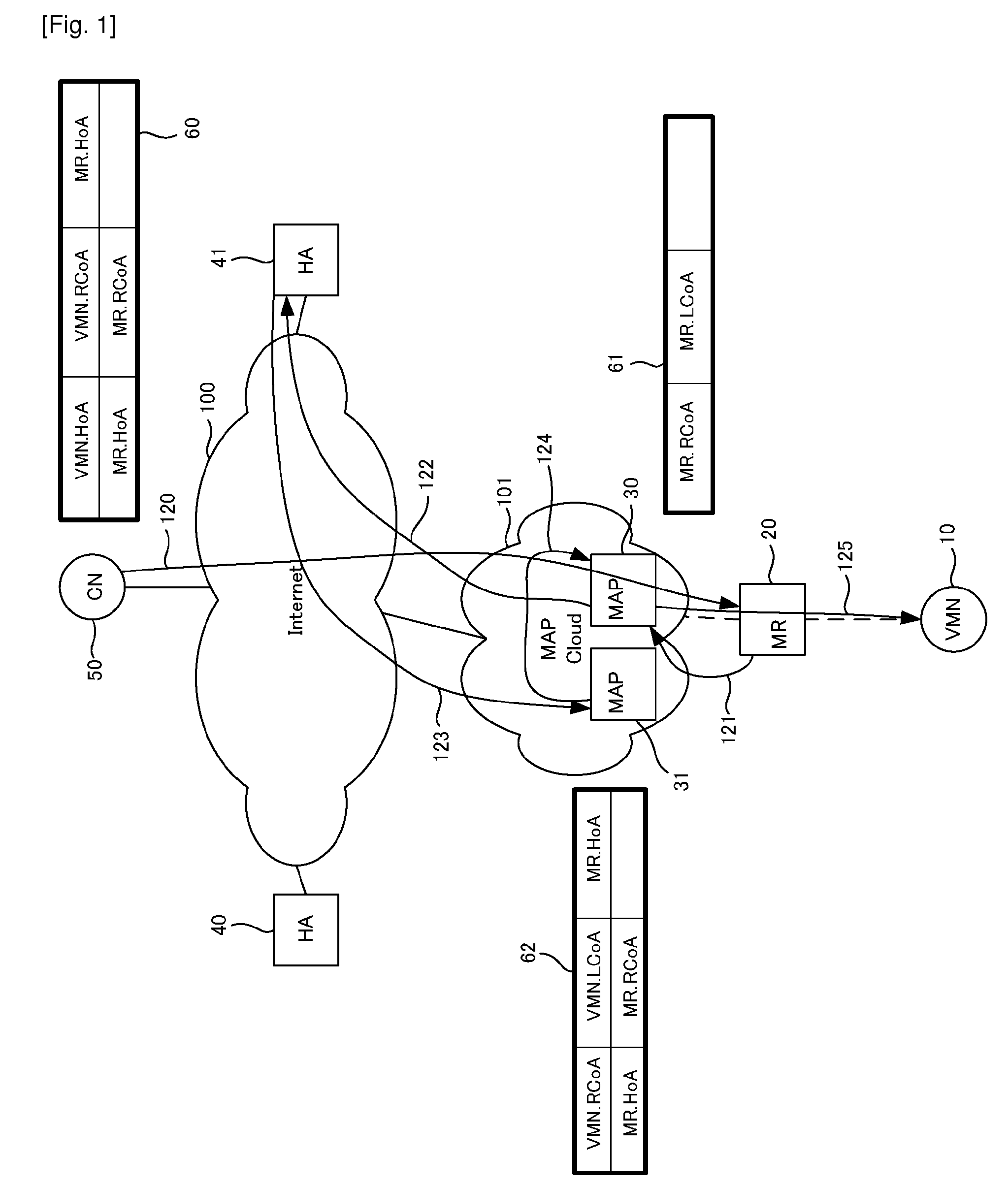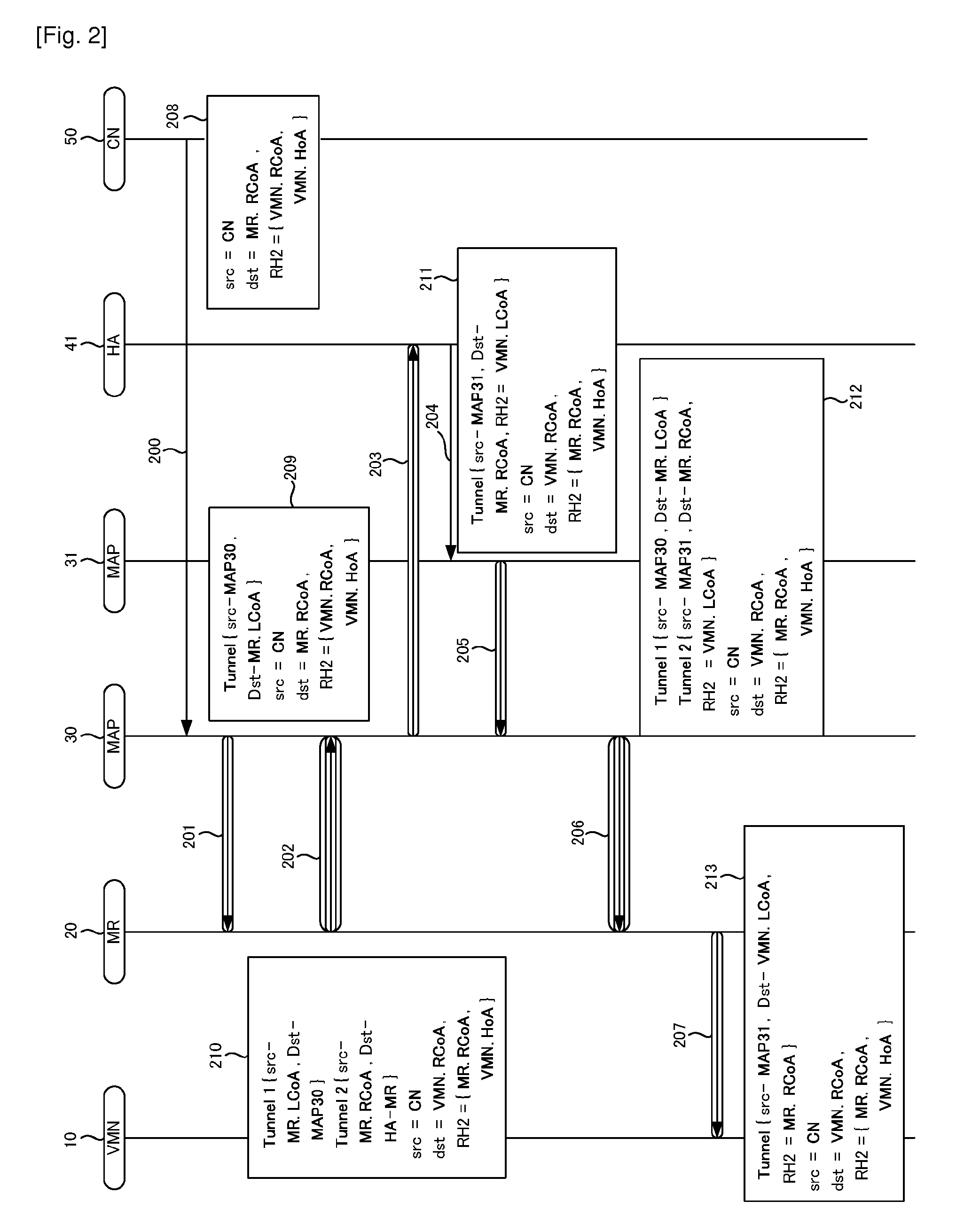System, method and apparatus for route-optimized communication for a mobile node nested in a mobile network
a mobile network and communication system technology, applied in the field of telecommunications, can solve problems such as packet loss, jitter and packet loss, and jitter is detrimental to applications, and packet loss is detrimental to flows, multimedia and video streaming, and packet loss is detrimental to applications
- Summary
- Abstract
- Description
- Claims
- Application Information
AI Technical Summary
Benefits of technology
Problems solved by technology
Method used
Image
Examples
Embodiment Construction
[0051]The present invention presents two main approaches. The first approach is such that, in order to provide local mobility management based route-optimization (i.e. using RCoA as care-of address to CN) to a MN / MR that is in nested NEMO, without violating the load balancing principle in a multiple MAP scenario, when a MR realizes that its downstream MN / MR is attached to another MAP which is different from its own, it will make an appropriate location registration at the other MAP. By MR doing so, semi-permanent registrations are created at the other MAP until the down stream MN / MR moves out from the above said MR's NEMO. Moreover, load balancing is achieved because another RCoA at the other MAP is not derived by the said MR to solve the route sub-optimality issue. If another RCoA is derived from the other MAP, then the other MAP may have to do ND-Proxy signaling for this address and thus increase the load on the above said other MAP.
[0052]The second approach is such that, again, i...
PUM
 Login to View More
Login to View More Abstract
Description
Claims
Application Information
 Login to View More
Login to View More - R&D
- Intellectual Property
- Life Sciences
- Materials
- Tech Scout
- Unparalleled Data Quality
- Higher Quality Content
- 60% Fewer Hallucinations
Browse by: Latest US Patents, China's latest patents, Technical Efficacy Thesaurus, Application Domain, Technology Topic, Popular Technical Reports.
© 2025 PatSnap. All rights reserved.Legal|Privacy policy|Modern Slavery Act Transparency Statement|Sitemap|About US| Contact US: help@patsnap.com



